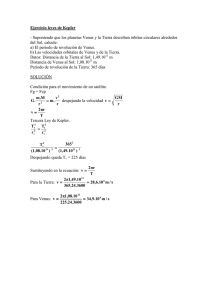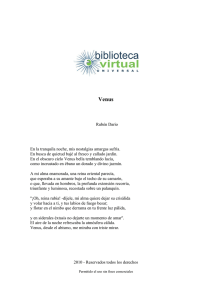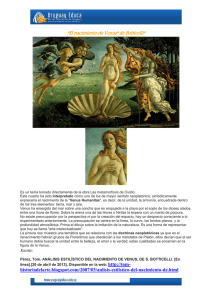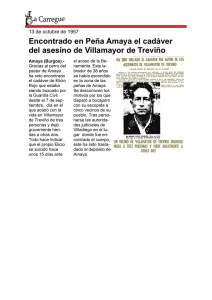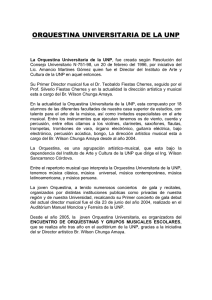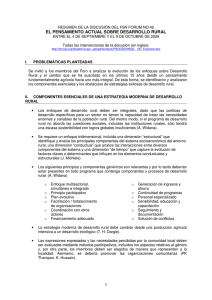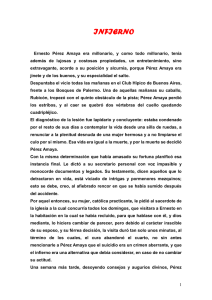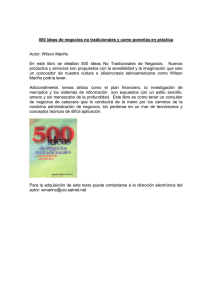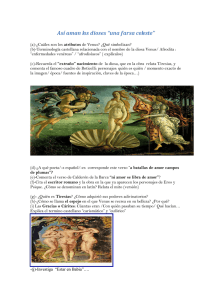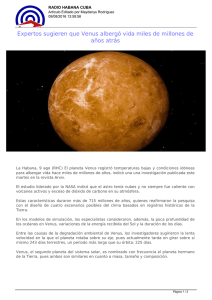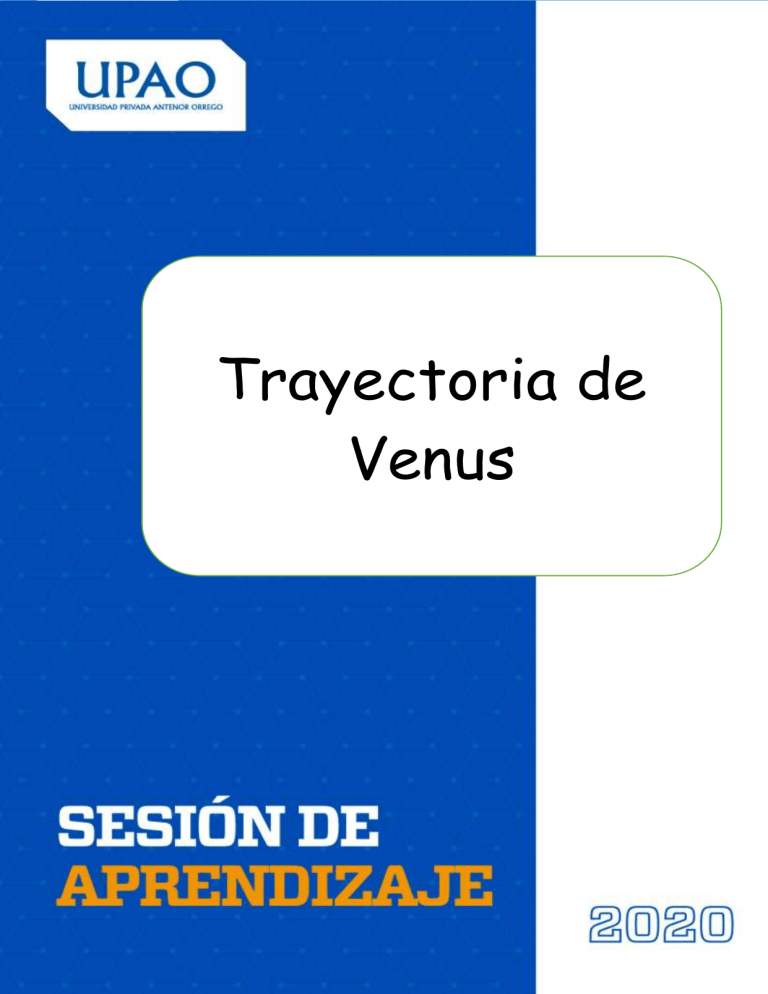
Trayectoria de Venus SEMANA I Docente: Mg. Wilson H. Chunga Amaya UNIVERSIDAD PRIVADA ANTENOR ORREGO FACULTAD DE INGENIERIA ESCUELA DE INGENIERIA CIVIL Integrantes: Abanto Gonzales, Luis. Garrido Jiménez, Kimberly. Garrido Jimenez, Priscilla. Guardia Méndez, Amer Joel. Palacios Suarez, Ericksson. Vives Ruiz, Robert Arian. Docente: Urteaga García, Juan. Curso: Dinámica. Ciclo: IV PIURA-PERU 2020 Docente: Mg. Wilson H. Chunga Amaya Problema ¿Cómo podemos describir matemáticamente las orbitas de los planetas? Hipótesis Utilizando un método numérico. Objetivo Describir matemáticamente la órbita de Venus. Estrategias Utilizar el método de Euler. Grafica de las trayectorias. Comprobar las leyes de Kepler. Docente: Mg. Wilson H. Chunga Amaya VENUS radio de Venus: 6,051.8 km Masa: 4.867 × 10^24 kg (0.815 M⊕) Gravedad: 8.87 m/s² Período orbital: 225 días Duración del día: 116d 18h 0m= 2802h 𝑥0 = 𝑟 𝑚𝑎𝑥 = 108.2 106 𝐾𝑚 𝑦0 = 0 𝑉𝑡 = 𝑊. 𝑅 𝑊 = √2 2𝜋 𝑟𝑎𝑑 225 𝑅 = 108.2 106 𝐾𝑚 𝑉𝑡 = (√2 ∗ 2𝜋 ∗ 108.2 106 𝐾𝑚)/(225𝑑 ∗ 𝑉𝑡 = 1525.0057 2802ℎ ) 1𝑑 𝑘𝑚 ℎ Docente: Mg. Wilson H. Chunga Amaya 𝑉𝑋0 = 0 𝑉𝑦0 = 1525.0057 𝑘𝑚 ℎ 𝐹 = 𝑚. 𝑎 𝐹= 𝐺 𝑀𝑚 𝑟2 𝑚. 𝑎 = 𝐺 𝑀𝑚 𝑟2 𝐺 = 6.67 1011 𝑎= 𝑎= 𝐺𝑀 𝑟2 6.67 1011 ∗ 1.989 1030 𝑘𝑔 2 (108.2 106 𝐾𝑚) 𝑎 = 1.1332 1026 𝐾𝑚 ℎ2 𝑎𝑥0 =- 1.1332 1026 𝑎𝑦0 = 0 Docente: Mg. Wilson H. Chunga Amaya UTILIZANDO LA SEGUNDA LEY DE KEPLER. CON LOS DATOS ADQUIRIDOS DETERMINAMOS QUE EL GIRO ORBITAL DE VENUS ES DE 225DIAS, POR LO TANTO, LO DIVIDIREMOS EN 8 PUNTOS (8MESES) Y X VENUS SOL Docente: Mg. Wilson H. Chunga Amaya P3 T2 P4 A2 P2 T1 A1 VENUS SOL P1 A1/T1 =A2/T2 Docente: Mg. Wilson H. Chunga Amaya
